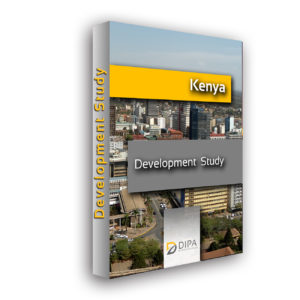
Executive Summary
1. The Country
1.1. Country’s History in Brief
1.2. Country Data
1.3. Economy
2. Kenya Devolution – Public Financial Management
2.1. Kenya’s devolution in context
2.2. The scale, scope and complexity of Kenya’s devolution.
2.3. Demographic and geographic diversity of Kenya’s counties
2.4. Equity between levels of government- Why it all starts with function assignment
2.5. Funding from within: County own revenue powers and capacity
2.6. Managing money for county development
2.7. Decentralizing public services
2.8. Managing a complex transition
3. Government’s Plan to Expand the Supply of Health Care and Strengthen Primary Health Care
3.1. Introduction
3.2. HSSF Institutional Architecture and Interaction with the Rest of the Health System
3.3. Targeting, Identification, and Enrolment of Beneficiaries
3.4. Special Topics Related to the Management of Public Funds in HCP
3.5. Management of the HCP’s Benefits Package
3.6. The Information Environment of the HCP
3.7. Key Conclusions
3.8. Pending Agenda
3.9. Proposed Way Forward
4. ICT sector and e-Government
4.1. Situation Overview
4.2. ICT SWOT analysis
4.3. Kenya’s ICT Master Plan
4.4. ICT Services
4.5. Vision, Theme and Guiding Principles of Kenya’s ICT Master Plan
4.6. ICT Human Capital andWorkforce Development
4.7. Integrated ICT Infrastructure
4.8. Integrated Information Infrastructure
4.9. ICT development Pillars
4.10. Flagship Projects
4.11. The 2014 Proposed OGP Action Plan
5. Institutions and Infrastructure for Digital Growth
5.1. Kenya’s Mobile Revolution
5.2. The Reach of Mobile Phones in Kenya
5.3. Literature on Mobile Money
5.4. The Basics of Mobile Money
5.5. Data
5.6. The Concept and Measurement of Mobile Savings
5.7. Analysis
5.8. The Future of Mobile Savings
6. Science, Technology and Innovation (ST&I) in Kenya
6.1. ST&I in Africancountries
6.2. Background to the ST&I policy
6.3. Kenya’s national innovation system
6.4. Strategic Policy Issues
6.5. Policy objectives and strategies
6.6. Structure for implementing and evaluating the ST&I policy and strategy
7. Climate Innovation in Kenya
7.1. Climate Technology Market Landscape: Kenya
7.2. Climate Innovation Analysis: Kenya
7.3. Kenyan Climate Innovation Center Model
7.4. Implementation Plan
7.5. Financial Plan
7.6. Outcomes and Impact
7.7. Risks
7.8. Conclusion
8. Business Development in Kenya
8.1. Openness To, and Restrictions Upon, Foreign Investment
8.2. Conversion and Transfer Policies
8.3. ExpropriationandCompensation
8.4. Dispute Settlement
8.5. Performance Requirements and Investment Incentives
8.6. Right to Private Ownership and Establishment
8.7. Protection of Property Rights
8.8. Transparency of the Regulatory System
8.9. Efficient Capital Markets and Portfolio Investment
8.10. Competition from State-Owned Enterprises
8.11. Corporate Social Responsibility
8.12. Political Violence
8.13. Corruption
8.14. Bilateral Investment AgreementsandTaxation Treaties
8.15. OPIC and Other Investment Insurance Programs
8.16. Labor
8.17. Foreign Trade Zones/Free Ports
9. Appendices
9.1. General Health System Overview of Financing and Delivery
9.2. HSSF Activity Planning
9.3. Investment sources and indicators
9.4. Manufacturing Sector in Kenya
